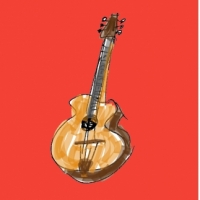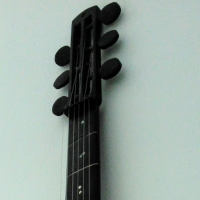DjangoBooks.com
Welcome to our Community!
Categories
- 20K All Categories
- 1.1K General
- 476 Welcome
- 59 Archtop Eddy's Corner
- 146 CD, DVD, and Concert Reviews
- 384 FAQ
- 26 Gypsy Jazz Italia
- 26 Photos
- 202 Gypsy Picking
- 21 Unaccompanied Django
- 15 Pearl Django Play-Along Vol.1
- 17 Gypsy Fire
- 45 Gypsy Rhythm
- 1.4K Gypsy Jazz University - Get Educated
- 130 Gypsy Jazz 101
- 224 Repertoire
- 218 History
- 707 Technique
- 51 Licks and Patterns
- 6 Daniel Givone Manouche Guitare Method Users Group
- 20 Eddie Lang Club
- 1.3K Gypsy Jazz Gear
- 801 Guitars, Strings, Picks, Amps, Pickups and Other Accessories
- 457 Classifieds
- 49 Recording
- 62 Other Instruments
- 18 Violin
- 5 Mandolin
- 22 Accordion
- 7 Bass
- 10 Woodwinds
- 346 Gypsy Jazz Events
- 142 North America
- 109 Europe
- 95 International
In this Discussion
Who's Online (0)
June Song Of The Month: Limehouse Blues
 MikeK
Asheville, NCNew Altamira M-30 D-Cedar, Gitane DG-320 John Jorgensen
MikeK
Asheville, NCNew Altamira M-30 D-Cedar, Gitane DG-320 John Jorgensen
Coincidentally, as I was considering this standard for song of the month, an interesting discussion erupted on the forum about soloing over challenging chord changes. That thread shined the forum light on this song, so look to that for great information from our knowledgeable members about soloing ideas on this one.
It was composed in 1921 in Britain by Philippe Braham (music) & Douglas Furber (lyrics). Evidently, Limehouse is the Chinatown of London, and the song premiered in 1921 in the show "A To Z", with Teddie Gerard singing it.
Django first recorded it in October of '35 and there's a link to that classic version below. He recorded it 5 times between '35 & '40. From show tunes to jazz standards to pop versions, so many great artists have recorded it over its 100+ year lifespan. Notable versions include those by Oscar Aleman, Kay Starr, John Jorgenson, and Bucky Pizzarella with Frank Vignola.
I dont particularly enjoy playing it super fast, as some guys play it in my area. It's too hard to get an idea going before you have to move on to something else. The joy for me in soloing over these changes is to slow it down a bit. But either way, it's a gypsy jazz classic with a great melody. And of course Django & Steph blaze on it, despite the intense speed. I'll post the chart that my band uses later.















Comments
Some GJ hopefuls (!) don't play Limehouse Blues so fast. E.g., here's Bireli playing Limehouse at about 210 bpm one time, and 180 bpm another time:
The first HCQ version was taken at a very leisurely pace but it still swings like mad. Django's creativity is way ahead of Steph's on this version.
https://youtu.be/npUn221X4Ws
youtube.com/user/TheTeddyDupont
It's a blues changes IV chord. I suppose to sound like Django the easiest way is to see what he played and make a variation of that.
I also love Fapy's laid-back version on his Star Eyes album. On which he plays a 1946 Selmer guitar #632!
Here's the chart my band uses:
I agree with Buco, the C7 can be seen as the IV chord if you see this as a blues in G. And the A7 can be seen either as the ii chord made into a dominant, or as the "V of the V", leading you to the D7. You also get a cool minor V-i in Emin in bars 11 and 12 (the relative minor of G) and a minor V-i in Amin in bars 26 thru 28. The soloing possibilities are limitless here, especially if the tempo is brought down a tad.
When there is a song with lyrics, I often like to learn them as I learn the melody. It helps to cement the melody in my head and is often the basis for the melody in the first place. Many times now, soloists take liberties with the original melody but the lyrics help keep you on track.
In this case, the original lyrics are sort of questionable. I found versions of modern people singing to the original sheet music, but not any original recordings in my hasty search (you can search if you are interested, I won't post them here.) The original version actually had one of those intro stanzas that @Willie is so good at rooting out, but in this case is sort of boring. The core melody as played by most of us today and represented in the sheet music above by @MikeK is the heart of the song without these extra bits.
Here are some more modern "revised" lyrics that remove the questionable racist content from the original, along with a video of Julie Andrews singing them (more or less).
Oh, Limehouse kid
Oh, oh, oh, Limehouse kid
Goin' the way
That the rest of them did
Poor broken blossom
And nobody's child
Haunting and taunting
You're just kind of wild
Oh, Limehouse blues
I've the real Limehouse blues
Can't seem to shake off
Those real China blues
Rings on your fingers
And tears for your crown
That is the story
Of old Chinatown
Wow! Limehouse Blues and Julie Andrews? Not a combination that comes readily mind.
youtube.com/user/TheTeddyDupont